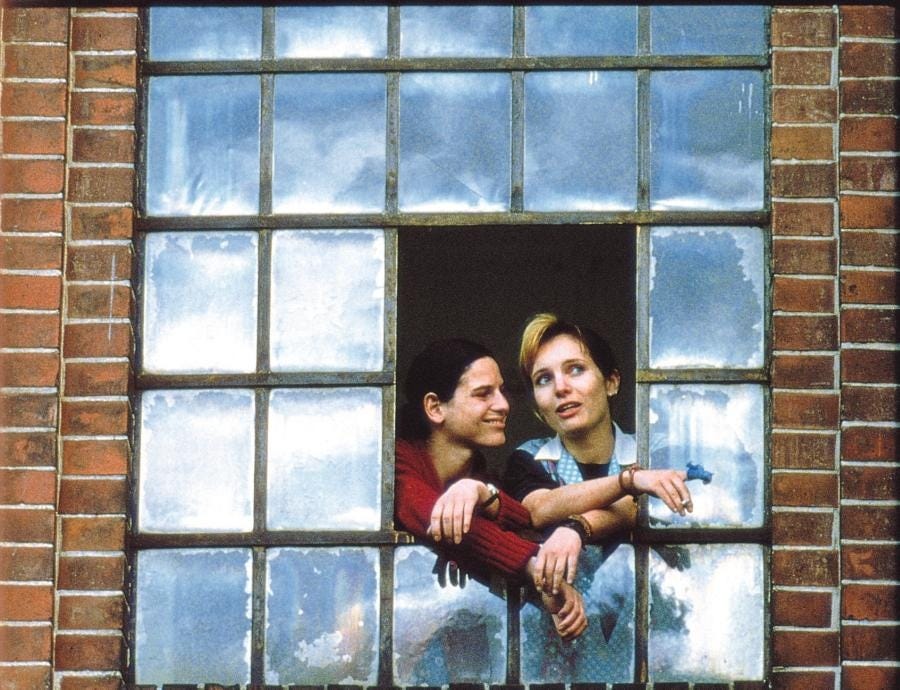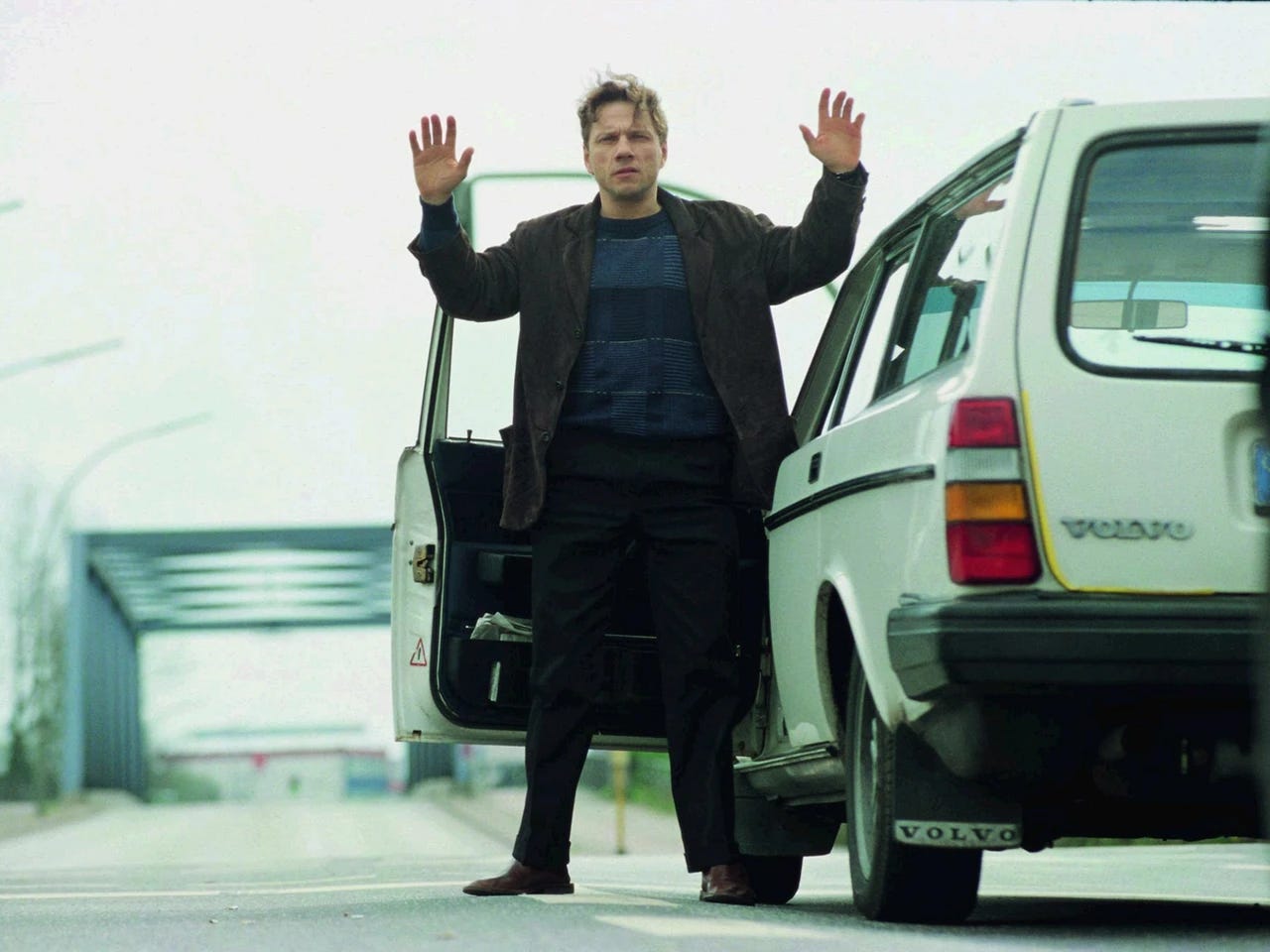Everything was like that. Nothing was exactly like that.
The Baader-Meinhof gang on the big screen
I have been making a very conscious effort while I’ve been living in Berlin to watch German cinema. One strand of this viewing has dovetailed nicely with research I’ve started for my next non-fiction book. This touches one of my (many) historical obsessions about postwar Germany, the origins and activities of the Red Army Faction, or Baader-Meinhof gang as they were more commonly known.
I won’t say too much about the non-fiction project, except that a part of it involves me trying to discover why there appears to be so little German crime fiction from the 1970s to up until about 2000 concerning the RAF and the milieu they originated from and operated in. Because the gang and their exploits have got a reasonably good airing on the big screen - the subject of this post - and I have been trying to track down and watch as many examples from this as possible.
An vital guide in chasing down this body of cinema is the excellent chapter on 1970s West German cinema and the RAF by Samm Deighan in the book we co-edited together, Revolution in 35mm: Political Violence and Resistance in Cinema, From the Art House to the Grindhouse, 1960-1990 (which is available from the publisher PM Press via this link). Samm’s chapter discusses how seventies film makers responded to the political violence carried out by the RAF, as well as the resultant harsh crackdown from the West German authorities as they tried to capture and smash the gang.
It’s impossible to cover everything, of course, and there are several RAF related films the chapter doesn’t cover, either due to space or because they appeared after 1990, the historical cut off period we applied to the book.
Two of these films I particularly want to discuss in this post.
The first is Volker Schlöndorff’s The Legend of Rita (2000). The film is supposedly based on the life of Inge Viett, a real life RAF militant and one of the last of the group to escape from West Germany to the communist eastern part of the country, known as the German Democratic Republic, where she was supported by the authorities, including the Ministry for State Security aka the Stasi.
The narrative jumps around a bit but basically follows Rita Vogt (Bibiana Beglau), an active member of the RAF through her various exploits with the group, guerilla attacks, kidnappings and bank robbers, etc. A period hiding out in Paris ends when Rita panics and fatally shoots a French traffic policeman who she thinks is about to arrest her. She also takes part in a prison break in Germany, during which a guard is killed, after which she and several of her colleagues have no choice but to flee to the East. While the GDR authorities are reluctant to help them for fear of antagonising the West Germany Government, the chief of the Stasi is shown to be sympathetic to their aims and instructs his agents to unofficially help them. She is given a new identity and commences a new life in the GDR.
She gets a job in a clothing factory, where she is distrusted by virtually all the female workforce, who largely detest the system in the GDR and cannot understand why someone would choose actually existing socialism, when they could live in comfort in the west. She also has starts a tempestuous relationship with Tatjana, a troubled women who also works at the factory.
But hanging over Rita is the fact that she is still a wanted fugitive in the west and when one of her workmates discovers her real identity, she threatens to expose her. The Stasi move Rita, and she starts working in a childcare centre. There, she falls in love with a male colleague and falls pregnant to him. But that too comes to an unfortunate conclusion when he moves to the Soviet Union and Rita’s Stasi handler refuses to let her go with him for fear that it will come out that the Stasi has been assisting members of the RAF, and counsels her to have an abortion. I won’t spoil the ending, except to say that it does not end well for Rita, and the film finishes with the somewhat mysterious statement on the screen (as I translated it at any rate), ‘Everything was like that. Nothing was exactly like that.’
The action sequences in the The Legend of Rita have a similar feel to Uli Edel’s The Baader-Meinhof Complex (which appeared in 2008 and is another film I watched recently, although truth be told I spent most of the film fixated on the RAF gang’s cool 1970s leather jackets). But from the point at which Rita accepts the offer of her Stasi handler to become a GDR citizen, the tone completely changes, and the story becomes a fascinating depiction of how Rita copes with life in the GDR, especially the collision between her socialist politics and the reality of life in the GDR. The film does not shy away from depicting what was bad about the system – emphasised by deliberate use of a drab, grey colour scheme. But it also gives us a glimpse of what worked or, at least, what was convivial, and community focused about the system. Rita’s relationships are also painted well, with nuance and sensitivity: her lover Tatjana, an alcoholic with serious mental health problems, her male lover, Jochen, and Erwin, her main Stasi handler, with who she develops an almost affectionate connection.
The second film that really impressed me was Christian Petzold’s The State I Am In (which also appeared in 2000). The story centres around a fifteen year old girl, Jeanne (Julia Hummer) who lives with her parents, Clara and Hans (played by Barbara Auer and Richy Müller), in Portugal. The parents have been on the run for some time from the authorities as a result of unspecified activities they carried out when they were members of an unnamed West German radical group – although it is not spelt out, very clearly the RAF. It is also not clearly stated exactly when the film is set, but it seems to take place post German reunification.
When things get too hot for the family in Portugal – the couple is robbed of all their money, and in the process Hans is badly injured – they decide to return to Germany, the only place that they have any networks left that can help them.
Largely told from the daughter’s point of view, the story bounces between Jeanne’s difficult, fumbling attempts to engage with teenage life: shoplifting fashionable clothes, her relationship with a young German boy she meets on the beach in Portugal, and her growing awareness of what her parents have done in the past and just how serious their situation is becoming. But we also see her parents having to tackle various obstacles: lack of money, former comrades who are now reluctant to assist them, the relentless of exhaustion of a life spend continuously on the move and, of course, the paranoia of feeling that arrest is always just around the corner.
If the plot of The State I Am In sounds familiar to some of you, it does indeed bear a remarkable similarity to Sidney Lumet’s 1988 film, Running on Empty, the story of a couple on the run with their two children for crimes that they committed as members of the Weather Underground back in the 1960s.
While I am not suggesting that Lumet’s work was in any way a reference point for Petzold’s, both films lean very heavily into the growing awareness on the part of the parents that it is becoming untenable to live as fugitives with teenage children in tow. Again, while I will not give away the plot of The State I Am In, both the tone and content of Running on Empty is positively upbeat compared to the later German film, which is far, far grimmer and concludes - like The Legend of Rita - without the bitter sweet ending offered up by Lumet.
There are other German films dealing with various aspects of the RAF’s history, that I have not been able to see. The first is Stammheim (1986), or as it was also known, Stammheim: The Baader-Meinhof Group on Trial by radical director Reinhard Hauff. This describes the trial of first generation RAF members Andreas Baader, Gudrun Ensslin, Ulrike Meinhof, and Jan-Carl Raspe, that took place in Stuttgart’s maximum security from 1975 to 1977. Baader, Ensslin and Raspe would be found dead in their prison cells, and there have been claims that this was not suicide, as the authorities contended (Meinhof definitely died by her own hand earlier).
There is also a 2002 biopic of Baader, titled Baader, directed by Christopher Roth, but I have been completely unsuccessful in that tracking a version of that down with English subtitles. If anyone can help on that score, please do drop me a line.




Just wanted to let you know there are a few copies of Baader (2002) available to watch on YouTube that allow auto translation with English subtitles. You just need to mess with YouTube's audio settings to make the subtitles visible . Don't know how accurate the translation will be but I've found the option useful. Best of luck with project!
Hi Andrew. Interested if you could recommend any factual accounts of the Red Army?